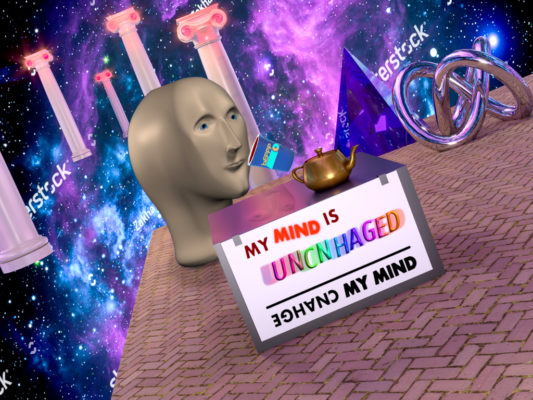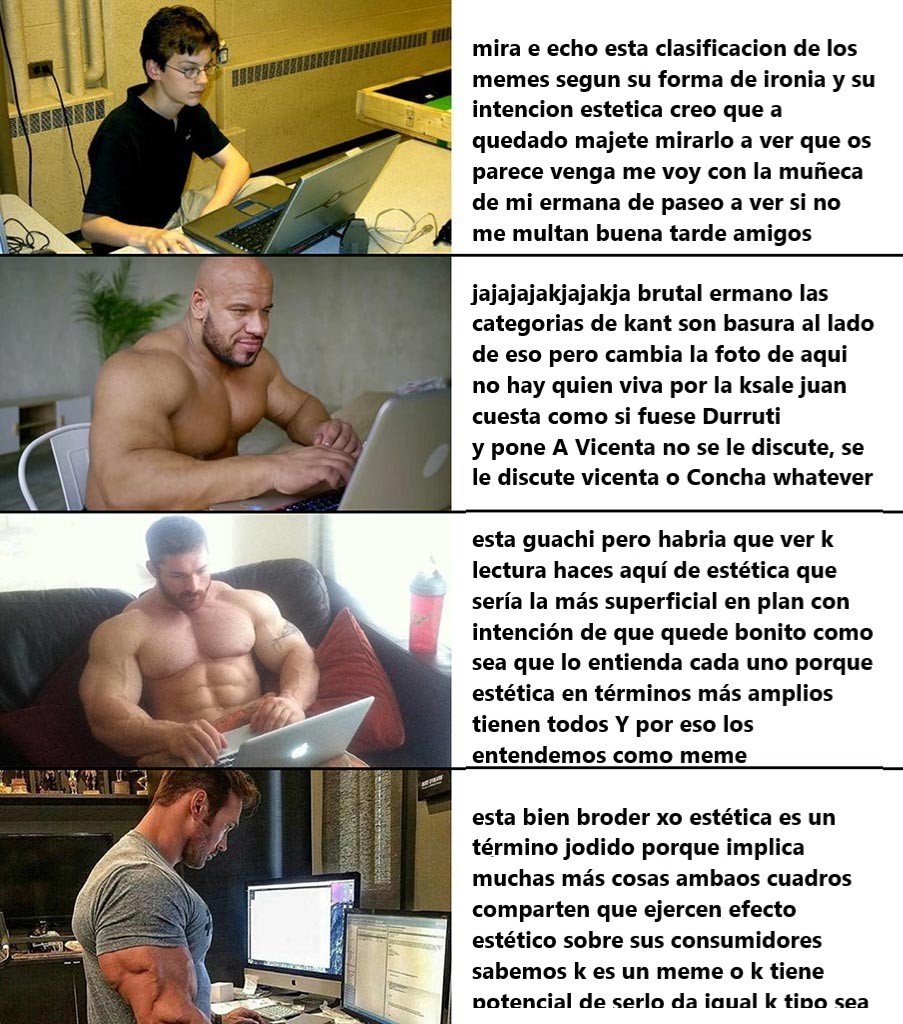Search
To search for an exact match, type the word or phrase you want in quotation marks.
A*DESK has been offering since 2002 contents about criticism and contemporary art. A*DESK has become consolidated thanks to all those who have believed in the project, all those who have followed us, debating, participating and collaborating. Many people have collaborated with A*DESK, and continue to do so. Their efforts, knowledge and belief in the project are what make it grow internationally. At A*DESK we have also generated work for over one hundred professionals in culture, from small collaborations with reviews and classes, to more prolonged and intense collaborations.
At A*DESK we believe in the need for free and universal access to culture and knowledge. We want to carry on being independent, remaining open to more ideas and opinions. If you believe in A*DESK, we need your backing to be able to continue. You can now participate in the project by supporting it. You can choose how much you want to contribute to the project.
You can decide how much you want to bring to the project.

The brutalist aesthetic of LOL defies the sophisticated empire of symbols the powers use to subjugate the People. Could it be used as an emancipatory element?
Public communication has always been vertical. During the XX century, freedom of expression became regulated by the media, a huge machinery of transmission of symbols and memes (these last ones being understood as the smallest unit of culture). This redefined the balances of power to the point it rendered the empires underpinned by military force obsolete and substituted them by empires underpinned by the spectacle.
Aesthetic canons of this vertical communication are defined by those who put those symbols on the screen. It’s a market aesthetic in which the public has the false illusion of taking decisions, but they’re actually suggested through mediatic hypnosis[1]. It invites people to follow changing fashions, throwing them to the absolute precariousness of the permanent obsolete garment. It demands more money from them for the bulging shape of the detergent bottle, whose only function is only that of catching their attention in the front shelves of the supermarket. It rejuvenates outdated machines like the car with increasingly unpleasant designs that give a feeling of innovation and makes us feel part of the elite that owns such a car. The market aesthetic is a “mockery aesthetic”, the empire of the symbols in which the oligarchy makes fun of the People[2]. The mass media act as “central bank” of these symbols or basic emotional units, that turn goods into fetishes and keep the power structures in place[3].
Internet has broken that vertical communication. The ultra-rational philosopher Mr. Satan[4] establishes three types of content creators on the Internet: the professional, who gets a retribution for doing what they do; the social, whose only purpose is communication with friends, relatives or larger groups that are kept together by personal affinity ties based on common tastes; and the anonymous, moved by a much simpler desire than to seek honours, namely: the joy that the execution of their project procures, the transformation of their idea in a reality conditioned by their own efforts. Usually, because of that anonymity, this character can afford acting like a cultural sniper, a deformer of the work of others, or they can simply afford “trolling”, for which they would have gone to prison in other circumstances.
The professional creator is, in essence, the prolongation of the vertical communication of the mass media on the internet. But what’s authentic to the Internet, Mr. Satan says, is the anonymous creator, who develops in forums or groups created by themselves or other people, and generates, together with other anonymous creators, a cycle of “degeneration” and “meta-ironisation” of the ironic memes themselves or humoristic artifacts. That is to say, the LOL.
The novelty that ICTs have introduced is what we know as the fourth ritual function of the work of art:[5] letting the People express, identify and relate themselves through their own creations. The interaction between the creator and the public is usually from equal to equal, it is personal and reciprocal through likes, shares, comments and remakes. Before the Internet, the symbol remained unchanged through time, its virality only implied an extension in the number of people who knew it. At the same time, they were unidirectional: a person watched a Steven Spielberg film and they may have liked it or not, but couldn’t respond to him making another film or sending him a peak-three. Today, a user sees a meme and can alter, share, comment or like it at their discretion, as long as the algorithm has shown it to them before.

As Mr. Satan suggests, the anonymous creator seems to worship a fetish-meme that feeds on their work to perfect itself, adding layers and layers of irony behind it. The meme gains power, and what was only a funny photograph, turns into thousands of photomontages, what was a simple meme is broken down into thousands of figures and specific contents, and what was nothing but a cultural trope, like Aquí no hay quien viva or any other piece of the classical repertoire, is transformed into the “generative principle” of shitposting and dank memes[6].
The anonymous creator is by definition ironic, since he responds and questions something that already exists. They accelerate then the normal cycle of symbols, memes and humour. They represent the unleashed deconstructive energy of the People, that finally has the ability to respond —to ironise— the messages of the plutocracy. But the People are only creative by pure statistic given their inherent massiveness: the mass is necessary in order for something to become viral, but it is unaesthetic by nature, that is to say, it lacks aesthetic sense. This is evidenced by the generalised indifference towards the height to width ratio in the images they restructure on Word or the random typefaces in onomastic signs in their local businesses. The mass doesn’t count with the multidisciplinary creative production team of a publicity agency, but it is rather composed by millions of individuals that interpret reality in a jumbled way. The People make compositions with the tools they have at hand, in their own pulsion of communication, without abiding to the strict canons of design, orthography or etiquette. In that sense, aesthetic importance in vertical communication ends up getting blurred by the horizontal one: it is now the affinity of the receiver with the content that defines the quality of the content.
The consecutive ironic creations and recreations on the Internet could be broken down around their form of irony[7]and their aesthetic intention, understanding this as their relationship with the standards of design, orthography, quantity and quality of the text, etc: they can be persecuted, ironically subverted or irrelevant. In this classification we could subdivide the four naive forms in post-art, or content that responds to a reality, like a political or social situation; and the four cynic ones in meta-art, which respond to a previous irony.
The aesthetic of LOL competes with that of power. In our screen, surrounded memes, comments, messages, videos and emojis that we share with our contacts, the oligarchy keeps presenting its products to us according to the market’s aesthetic, associating them to symbols that turn them into fetishes, while they explore the possibilities of the new ecosystem, the algorithm, in order to get to you, the ideal consumer of their thing.
In the face of this imposition of symbols, the aesthetic brutalism of popular creations, their constant and progressive ironisation of everything, their insubordination towards any canon is what opens up a crack to us that momentarily releases us from the media oligarchy. it’s a chaotic instant involuntary subconscious dat mb if we learn 2 domin8 da aesthetic of lol itll make us free fr/ da empire of symbols.
[1] “The development of radio, press and cinema allows the enormous extension of an influence that, essentially, doesn’t differ from hypnosis. Big masses repeat every week what has been digested to be believed, they buy things because they have been shown a beautiful girl or a “man of science” use those articles. They mechanically perform certain actions because they have been assured, they need to perform them. Conduct becomes then stereotyped, monotonous, compulsive and pathological.” Charles Morris: Signs, Language and Behavior (1946)
[2] In The propaganda model (1988), Edward S. Herman and Noam Chomsky report the end of restrictions on advertising in the United States in the early 1980s by government agency Federal Communications Commission. “FCC’s Chairman in the Reagan era, Mark Fowler, justified it by claiming the options in the market are opening up and that the public must have freedom of choice. When criticized by Fred Friendly for abolishing the criteria from the public interest law, Fowler replied that Friendly ‘mistrusts the capacity of the public to make their own decisions through the marketplace mechanism. Not me.’”
[3] We note down these notions as a starting point of this reflection without focusing on their development, since they aren’t its main target. However, we are quick to quote Guy Debord in Society of the Spectacle (1968). 36: “The fetishism of the commodity attains its ultimate fulfillment in the spectacle”. 48: “Use value was formerly understood as an implicit aspect of exchange value. Now, however, within the upside-down world of the spectacle, it must be explicitly proclaimed, both because its actual reality has been eroded by the overdeveloped commodity economy and because it serves as a necessary pseudo-justification for a counterfeit life”. 13: “It [the spectacle] is the sun that never sets over the empire of modern passivity.” 16: “The spectacle is able to subject human beings to itself because the economy has already totally subjugated them”. Etc.
[4] Mr Satan and Doppelgänger, James (2019) Ultrarracionalismo. Salamanca: Delirio
[5] The three previous functions, defined by Walter Benjamin in The Work of Art in the Age of Mechanical Reproduction (1935), they are: (1) as a ritual in time and space in which they were conceived, for example, a religious ceremony; (2) as an aesthetic product to be placed in a museum; (3) as goods to be technically reproduced.
[6] Albert Lloreta’s makes an interesting reflection about dank memes in Los «dank memes»: la reacción a una Internet invivible(CCCBLab, 19th of November 2019)
[7] For a complete description, see Mr. Satan (2017) Las cuatro formas de ironía in Homo Velamine (28th of November) and Mr. Satan and James Doppelgänger (2019) Ultrarracionalismo, Salamanca: Delirio.

Anónimo García is an expert on boomer behavior on the Internet, a member of the WhatsApp group “Fans of ole los camelas” and a regular commentator on the Alcampo Facebook page. He is the author of Razonomator, an app that generates hoaxes.
"A desk is a dangerous place from which to watch the world" (John Le Carré)